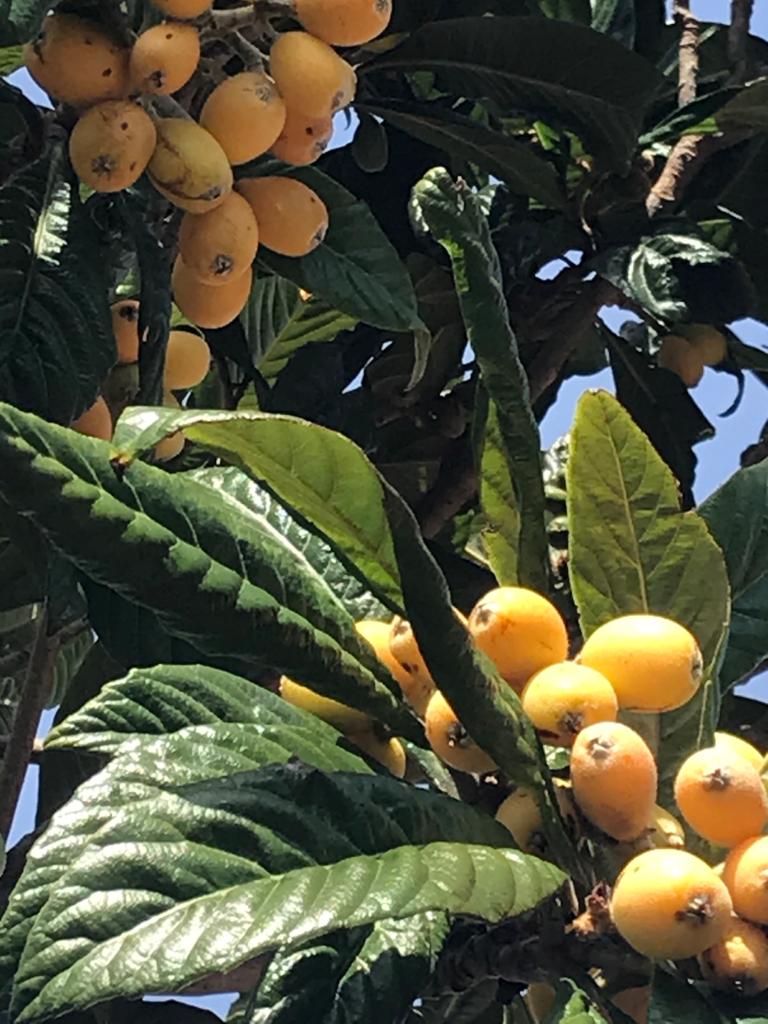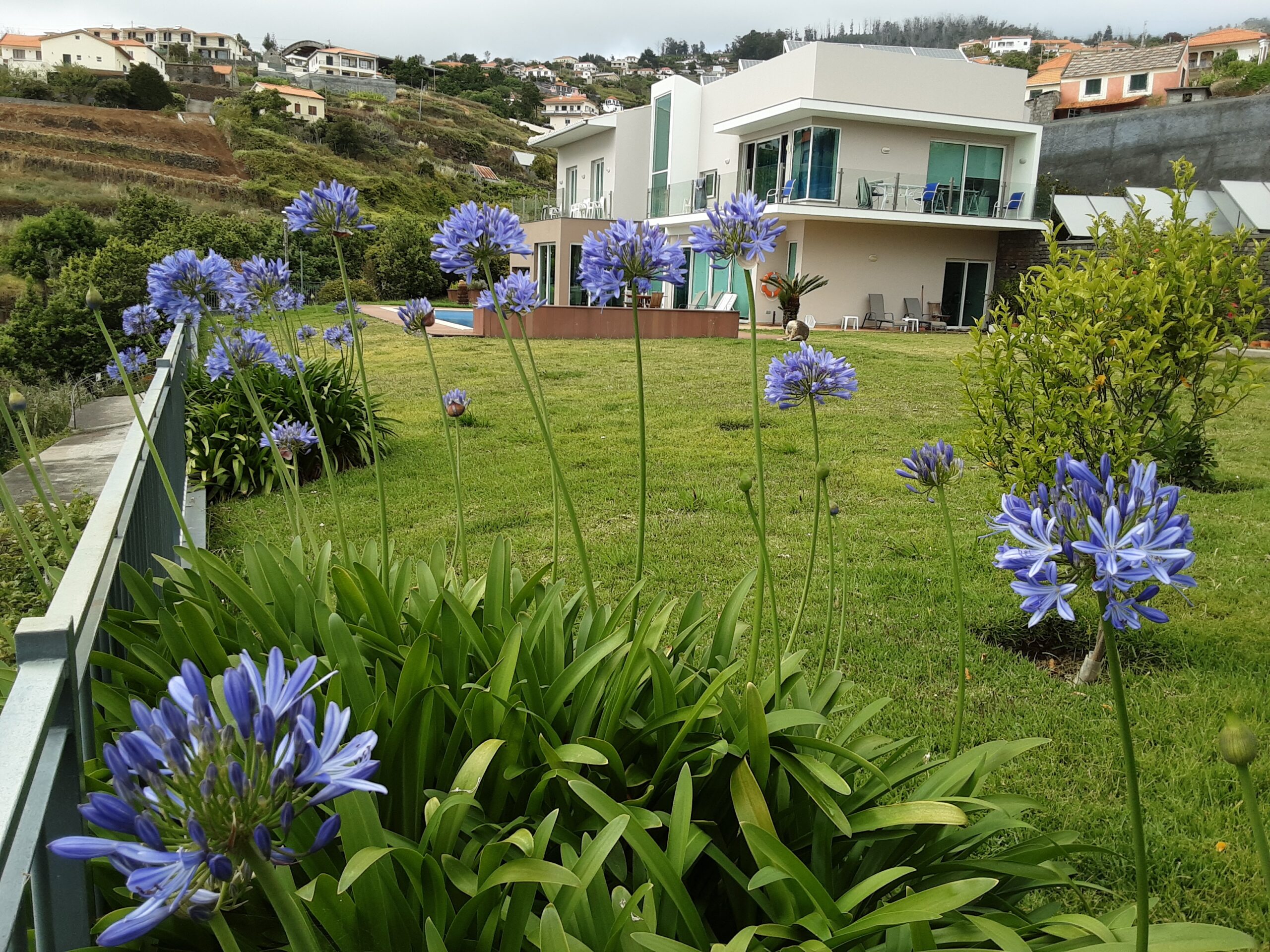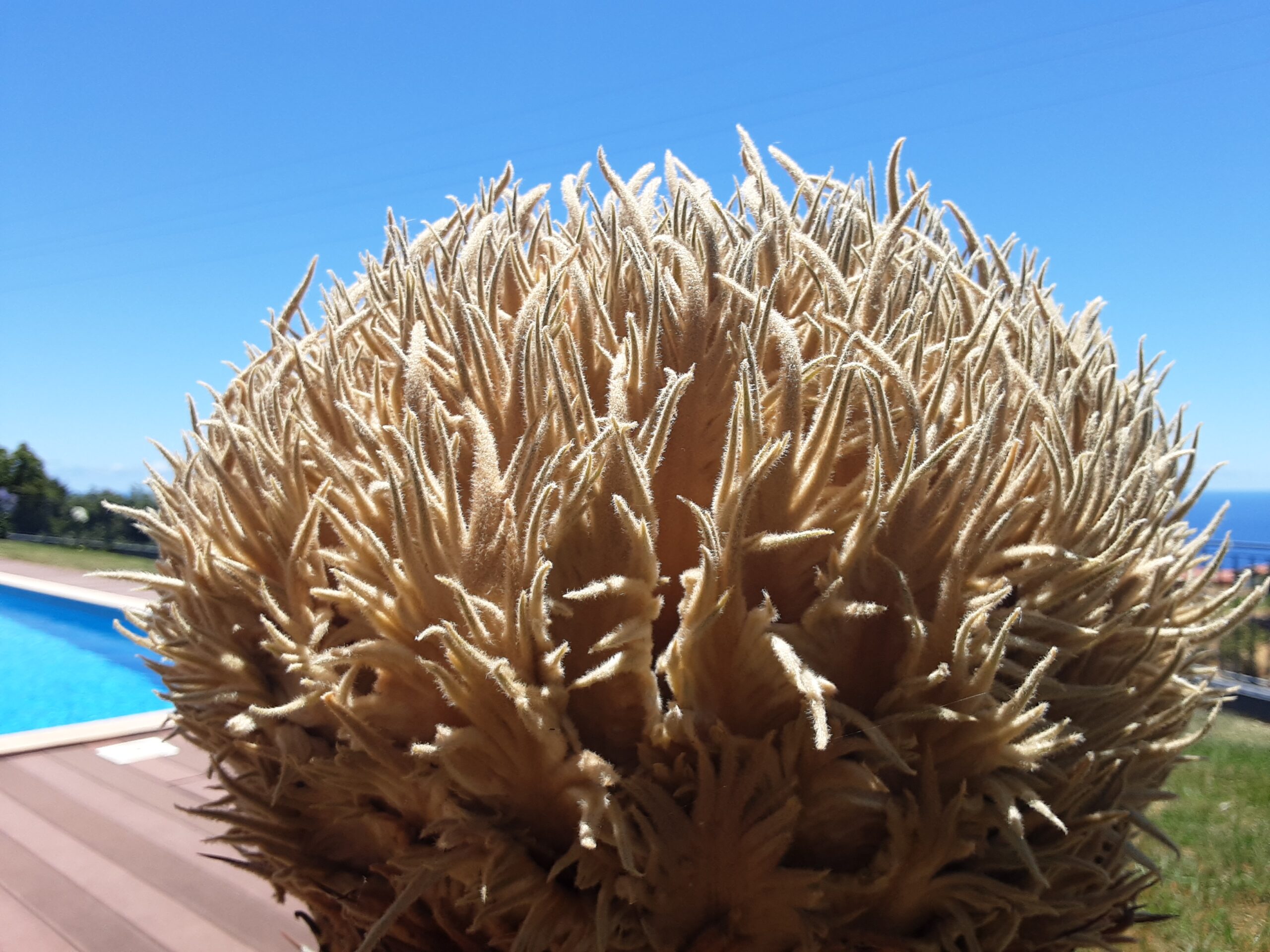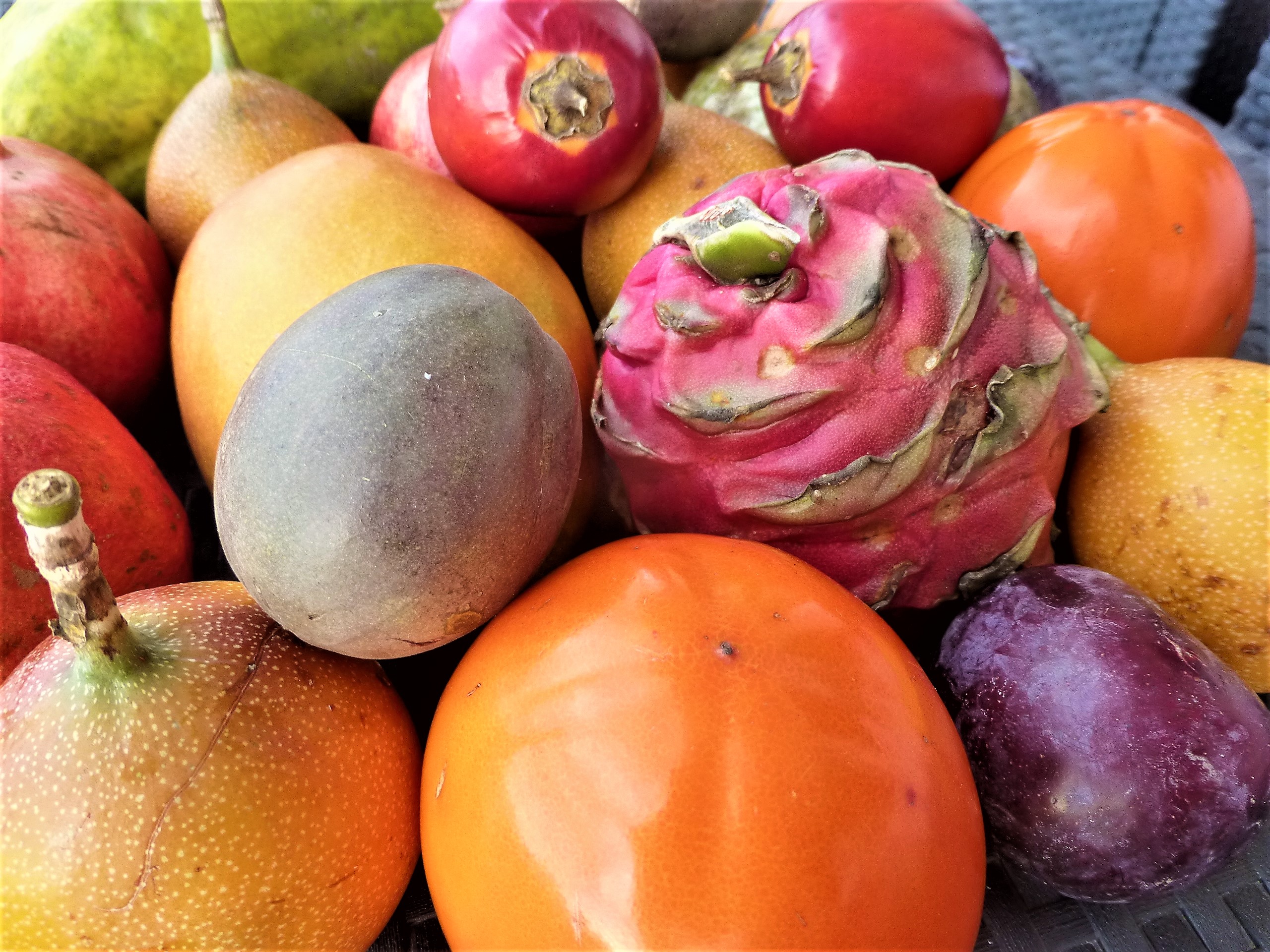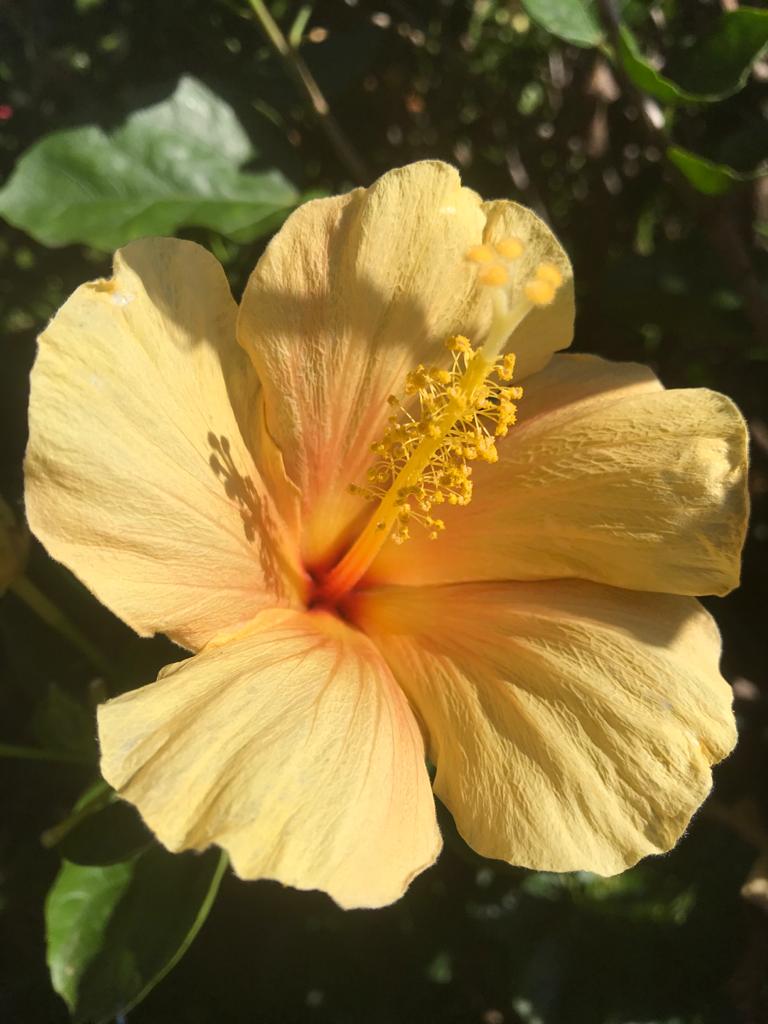LA FRANGIPANI
11.11.2020
This is our home in sunny Madeira, the unpolluted ocean paradise. We have been here for more than seven years and love the island; sadly, the last three years with the pandemic have more or less made us housebound with our two ladies (Lady Rose and Maya).
We are so fortunate to have a large mountain forest and nature reserve minutes away from the villa, full of Eucalyptus trees, a place where we can walk for hours without seeing people. See “Our Madeira” as to our walks and the views of sundowns from our place.
We have over 330 days of sun here, and in periods of a little drizzle, we call it God’s tears; it really does not make you wet, but it is so good for the plants. Madeira is 56 kilometres long and 23 wide, although, it was officially discovered by the Portuguese in the 13th Century, academic historian has found evidence that the Vikings was on the island many centuries before (More later). Madeira Island is not really sold as the total unpolluted Island in the Atlantic Ocean, an ideal place to grow organic fruits and vegetables. One never sees this advertised, despite it being a fact. The Island has a reputation and is known as the Garden of the Atlantic.
Our garden has 60 trees and large bushes; five large bushes-trees are Frangipani, three pink and two deep red. They all decorate the entrance driveway, so therefore the name of the villa. Apart from the Frangipani, my favourite tree is the “African Tulip Tree”, see the pictures on the right, first the tree, a flower and the last with my dogs Lady Rose and Maya.
Few tropical flowers are as delicate and pure looking as the Frangipani. Also commonly known as Plumeria, this flower is native to South America and the Caribbean Islands. Even if you do not like in a climate zone warm enough for growing your own Frangipani, you can appreciate the rich scent and inspiring meaning of this bloom, the history and power of this flower. Further, a potent symbol for personal development or making meaningful arrangements.
What Does the Frangipani Flower Mean?
A few different cultures have assigned meanings to the Frangipani flower, including modern American culture. These meanings include:
-
- The strength to withstand tough challenges
- Connecting with spirits and ghosts
- Welcoming guests and inviting them to stay, due to its use in Hawaiian leis
- Intense love and a lasting bond between two people
- Immortality and spiritual devotion spread over multiple lifetimes
The Mayans and other Mesoamericans held this flower in very high esteem, as evidenced by the extensive carvings and paintings found that feature the blooms. However, it’s not currently known what exactly the Plumeria means to them. The flower is still used today in religious rituals in Hindu, Buddhist, Balinese, and Swahili cultures.
Etymological Meaning of the Frangipani Flower
All Frangipani varieties fall under the scientific name Plumeria. The Frangipani title was derived from a 16th-century nobleman named Marquis Frangipani. He created a unique perfume that became very popular for scenting gloves, so when the flower arrived in Europe shortly afterwards and produced a scent very similar to his perfume, the name stuck.
The symbolism of the Frangipani Flower
Modern florists often recommend the Frangipani as a gift for someone who has endured many challenges because this plant must be heated over 260 C degrees to catch alight and start burning. Aside from a natural toughness, the delicate look of the flower makes it a symbol of grace, wealth, and perfection across Asia. However, many people in China and Vietnam consider it unlucky because of a folk belief that ghosts and other spirits live in the branches of the bush.
As a wedding flower across southern India, it symbolizes the lasting bond between a married couple. Chinese people also use it to indicate affection and love when it’s inappropriate to speak about those feelings openly. Swahili poets also use it as a symbol of love, while Buddhist and Hindu followers consider it a sign of immortality and the continuation of the soul after death.
Plant Story – the Mysterious Marquis Frangipani
The Marquis Frangipani eludes me.
Frangipani, Plumeria, is one of the plants where the common name is no easier than the scientific name: both are multi-syllable words unfamiliar to most people. The scientific name is Plumeria. That name was chosen by Linneaus in the middle 1700s in honour of the Franciscan monk and French botanist Charles Plumier (1646-1704, biography), who collected and described many plants in the Caribbean in the late 1600s, one of which was Plumeria.
The plant was, of course, well-known to native Americans across the Caribbean and Central America. The Badianus Manuscript, 1552, describes it and its use by the Aztecs, but The Badianus Manuscript was not widely known or available for many years after it was written (link).
Scientists and people in Hawaii make a common name out of the scientific name, saying Plumeria.
The Frangipani Story:
In many other English-speaking places, the common name for Plumeria is Frangipani. According to the Oxford English Dictionary, Frangipani refers to a late 17th-century nobleman. The story is that Marquis Muzio Frangipani, a Marshal of France, invented an almond-scented glove perfume that became the rage. Leather gloves frequently stank, so the nobles perfumed them. Marquis Frangipani not only chose a scent for his gloves that became very popular, indeed, worn by King Charles IX (1550-1574) of France, he developed a better method for perfuming gloves.
The food with a similar name, frangipane, almond-flavoured paste, was reportedly developed about the same time by innovative French pastry chefs cashing in on the fad.
The plant Plumeria is called Frangipani either because the glove perfume was made with frangipani flowers or alternately, the fragrance of the flowers reminded people of the glove perfume, although the perfume was made with other things.
Depending on whether you are speaking Italian, French or English, Frangipani can be spelt frangipan and frangipane. In English today, frangipane refers to almond-flavoured foods, and Frangipani is the common name of the plant.
Lots of books and websites tell you the story above of Marquis Muzio Frangipani and the perfumed gloves.
Searching For Marquis Frangipani:
I could find Frangipani as an old Italian name. In the 11th to 13th centuries, Frangipanis were important in papal politics.
There’s a story from the late 1800s, not appearing much on current websites, of the discovery of Plumeria by Mercurio Frangipani. In this story, Mercurio sailed with Columbus, and before America was sighted, they smelled a wonderful fragrance and told Columbus that land was near. The next day they sailed into Antigua and learned the scent was from plumeria flowers, which were consequently named for Mercurio Frangipani.
Despite having read so much about Christopher Columbus in recent years and working on a special website for Christopher Columbus, I have not seen this story before, however, I know we have many Frangipani here in Madeira and they may have come from the West Indies hundreds of years ago.
Kettler (link) showed in 2015 that the Mercurio Frangipani story is fiction. No Mercurio Frangipani is known on any of Columbus’ voyages (Columbus crew), and the various versions of the story give different details of discovery (Columbus landed on Antigua on the second, not first voyage, for example). Furthermore, there is good documentation of Plumier finding Plumeria and making the first report of it to European science in the late 1600s. Apparently, the Mercurio Frangipani story was written in the late 1800s–it appears in The Art of Perfumery by G.W. Septimus Piesse link–to help sell perfume to the English middle class.
Ok, but the Marquis of the gloves was “late 17th century,” not 1492. To report the story of Marquis Muzio Frangipani creating the scent with his name, I googled him in order to put dates by his name, as I did with Plumier. And drew a blank.
So I searched for famous Frangipanis and found the 11th to 13th-century ones. The New Catholic Dictionary says a Mutio Frangipani led the papal auxiliaries to France in 1569. I found Mutio Frangipani named in other historical works about Italy; for example, he married Gulia Strozzi in 1562 and bought an Italian property in 1572. He is too early to be the late 17th-century perfume inventor, has a different first name, and nobody wrote anything about him perfuming gloves. Looking at biographic encyclopedias, 16th and 17th-century Frangipanis, I can document Dominican friars, Italian lawyers, poets and painters, the last of which died in 1630. There is no Muzio, and none was given credit for perfumery.
We have wonderful online resources today. I found a Spanish work from 1753, El Gran Diccionario Historico…link, which gives a two-sentence biography of Mutio Frangipani, spelling his first name Mucio. It further says a bit about one of his sons and then that Mucio’s nephew invented the glove perfume that has retained the Frangipani name. It doesn’t name his nephew. This might be the missing piece of information! But it lacked details and was written at least 100 years after Marquis Frangipani lived. It is possible but unlikely that the nephew of a man who married in 1562 would be described as “late 17th century”.
In the 1800s Dan Hanbury in Notes and Queries, (Dec. 25, 1859 edition) quoted Gilles Ménage in Origini della Lingua Italiana, Geneva 1685 for the Marquis Frangipani story.
Both Hanbury and Piesse in the Art of Perfumery, which gives the Frangipani story about the same time, comment that Ménage was a contemporary of Marquis Frangipani. Since both quote Ménage directly and identically–the story is that old (1685), which doesn’t make it accurate.
Ménage (1613-1692 biography), in both Origini della Lingua Italiana (link) and its French equivalent, Dictionaire etymologique, ov Originese de la langue francoise… (link) said that the Marquis of Frangipani, a Roman squire, invented the perfume as described in the letter of M. de Balzac and quotes the letter. Balzac’s letters are online in rather rough translation. Jean-Louis Guez, Seigneur de Balzac (1595-1654, biography), wrote that he was sending perfumed gloves to his friend Madam Desloges (1585-1641 biography) and recommended that she promote them to help his friend the perfumer, writing:
“They will grow into more request than the Gloves of the Frangapani: but because your people of Lymou∣sin may take occasion to Equivocate here: I entreat you to advertise them, that this Perfumer hath three thousand pound rent a year; and holds the supremest dignity of our Province, and that this Glover is a Romane Lord, Marshall of the Campe of the King’s Armies, cousin [but: the original says parent] to Sr. Gregory the Great, and that which I value more than all this, one of the honest men that live…” link (italicized names in the online original). The letter is from 1634.
Note that this does not say Frangipani made the perfume, only that a very honest perfumer will benefit if the gloves sell well. Ménage, writing about 50 years later, seems to have been the first to say Frangipani made the perfume and was a Marquis.
Marquis Frangipani should be a famous man. A marquis is a very high-ranking nobleman. I have looked for him. I checked the lists of families with the rank of Marquis in France and Italy. No Frangipanis there or in the listed lesser nobility.
I searched the lists of the Marshals of France and maréchal général des camps et armées du roi which is the same rank. This was a rare, high honour, and its recipients are clearly listed online (for example link)—no Frangipani.
At least three popes in the 1500s called themselves Gregory, Gregory XIII, XIV and XV. It is not easy to find their family trees, but none has a mother named Frangipani or any Frangipanis described in their official biographies.
So was there a late 17th-century nobleman named Frangipani who invented a glove perfume?
I can’t prove he didn’t exist, but he eludes me as the other characters in this story do not.
Marquis Muzio Frangipani was 1) certainly not a Marshal of France and 2) not a Marquis in Italy or France. He could have been a minor nobleman affecting the title Marquis, but I can find no independent confirmation of his actual existence. Some of his stories are almost certainly confused with Mutio Frangipani. But note that the name Muzio is not elsewhere reported, the “late 17th century” must be wrong since Balzac had the perfume in 1643, and his rank and honours don’t check out.
Approaching the problem by looking at glove-making history, Catherine de Medici (1519-1589), Queen of France, popularized gloves. Glove histories report the glove makers of France and Italy provided her with a wide array of scents for gloves. Redwood’s book puts the Frangipani scent there in the reign of Louis XIII (1610-1643).
Why plumeria is called Frangipani-
My original interest in this mystery was to document the flower name. Frangipani is the name of a plant from the Americas that Plumier discovered. How did the Frangipani name get to the plant? While some modern writers write that plumeria flowers were put into the perfume, that seems unlikely. First, Plumeria is too frost-sensitive to grow in most of France and Italy. It is currently an important flower in Sicily, which is the mildest climate in Italy, but it was brought there in the 1800s.
More important, historians don’t have the complete formula for the historic Frangipani perfume, but it was reported to have been made either from bitter almonds or from musk, ambergris and civet, in neither case with plumeria flowers.
It is logical that the frangipani glove perfume was a scent familiar to Europeans who encountered Plumeria in the tropics, thought the plant smelled similar and referred to it by the perfume’s name.
That seems a reasonable explanation for why Plumeria is called Frangipani.
But I cannot locate Muzio Frangipani
Nevertheless, after a great deal of work, I have to report that I cannot find Marquis Muzio Frangipani, the 17th-century nobleman. To reiterate, Ménage and later sources say an unnamed nephew of Mutio Frangipani invented the perfume, but I can find no information on him. He certainly was neither a marquis nor a Marshal of France, and if he invented the perfume, not in the late 17th century. It is quite peculiar. However, noting that Earl Grey had nothing to do with Earl Grey tea (link see the next-to-last paragraph and links) my suspicion is that a glover/perfumer (it was the same guild at the time) invented the perfume and gave it a distinguished and memorable name, about which a better and better story gradually evolved.
Our Fruits and Vegetables
We have Guava, Lime, Lemons, Pitanga, Papaya, Mongo, Banana and Araçal. In addition, strawberries, radishes and tomatoes. We used to have very good figs and avocados, hanging on trees from the neighbours, but no more. The Pitanga, Guava and Araçal, which we had not eaten before we came here, are very special fruits.
Guava (scientific name Psidium pyriferum) is another tropical fruit originating in the Americas. It is a fruit stuffed with seeds, with a light and sweet taste, with an interior usually pink and a relatively low energy value (about 68 kcal per 100g).
Guava trees usually bear fruit in the autumn/winter season, between October and February. Its production is mainly done on the south coast of the island, mainly in the municipalities of Funchal, Câmara de Lobos and Ribeira Brava.
Guava is rich in fibre, contributing to the maintenance of good intestinal transit, so it helps with digestion. This tropical fruit is abundant in antioxidants, such as lycopene and vitamin C. This helps to prevent the ageing of cells, as they avoid the damage caused by free radicals. The presence of vitamin C also enhances the absorption of iron by the body, which is why it is recommended for people suffering from anaemia.
In Madeira, it is common for guava to be used in jams, smoothies, juices and even liquor.
Pitanga
The pitanga, Eugenia uniflora L., is another tropical fruit coming directly from Brazil to Madeira Island. It is not a very likely fruit to be commercialized, since from the moment it ripens it is extremely delicate and easily spoils, which makes its storage and transportation not economically viable. These factors make it a fruit unknown to many Portuguese and foreigners who visit us (with the notable exception of Brazilians).
The trees, the pitangueiras, germinate easily, to the point of being used in public spaces and gardens and bearing fruit several times a year. Most are on the south coast of the island, between Funchal and Ponta do Sol.
Pitanga has a bittersweet flavour: if harvested with an orange to red colour, it is more acidic, while harvested with a dark red or even almost black tone, it is much sweeter. This versatility makes it used in different ways in cooking, from jams and chutneys to traditional alcoholic beverages such as poncha.
In nutritional terms, it is a fruit low in sugar, with the presence of vitamin A, an important element for vision and the immune system (it stimulates the production and activity of white blood cells). It is also rich in vitamin C.
Banana
Banana was first introduced to the Madeira archipelago in the 16th century. This banana would be different from what we see today, and over time we have had the presence of different types of bananas. The one we are most aware of today is the subspecies Musa cavendishii. There are other banana varieties available on the island, the silver banana and the apple banana, but their production is small and local, limited to personal gardens or small plots, so it is not easy to sell.
The banana from Madeira is characterized by its fruity and naturally sweet flavour, which contrasts with the majority of bananas available on the national market, usually from South and Central America. They are generally smaller, but their natural sugar content is higher and this is reflected in the flavour.
The banana grows easily on the island of Madeira due to its geographical position and the climatic conditions present on the island. The production takes between 12 to 14 months, from the plant’s growth to the cutting of the banana bunch (usually one per banana tree). Most of the production is made in the south, between sea level and the elevation of two hundred meters, where there is high temperature, good sun exposure and water in abundance, coming from the north of the island through levadas. There are banana trees all over the south coast of the island, but there is a special focus on the Ponta do Sol and Calheta areas.
Bananas are a fruit rich in vitamin A, vitamin C, fibre, iron, phosphorus, calcium, potassium and naturally present sugars. It has benefits for the immune system (due to the presence of vitamins A and C), for the maintenance and recovery of muscle mass (potassium in large quantities, which also makes it a more radioactive fruit than the rest), for the maintenance of bone density (due to the calcium present) and even contributes to weight loss (by having a high satiety factor). It is a food widely consumed by athletes and active people in general for providing energy, about 90 kcal per banana.
In the archipelago, the banana is widely used in sweets, puddings, in the making of cakes, liqueurs or even as an accompaniment to fish dishes (see the traditional black scabbard fish with banana).
We have apple banana, which is the best, but most banana is the common one from the island.
Papaya
Papaya is a tropical fruit of papaya. It is possible to see papayas fruiting throughout the year, but in summer the frequency is higher. Production is generally done up to 250 meters on the south coast, in scattered feet and in small plantations.
The papaya (Carica papaya) is originally from Central America and North-South America. It is a sweet fruit with a soft pulp full of round black seeds that are removed before consumption. Because it has a very pleasant and tropical flavour it has become very popular and local production has proved to be of great quality, and often the fruits of small local farmers far exceed the quality of imported fruits that we often find in supermarkets. The production on the island focuses mainly on small farmers, and it is most successful in the Ponta do Sol Municipality.
Papaya is a very versatile fruit and can be consumed naturally, in juices, smoothies, puddings, jams or even liqueurs. Regarding the nutritional value of papaya, this is obvious: it is abundant in vitamins C, and A, calcium, phosphorus, iron, sodium and beta-carotene. This nutritional profile favours the strengthening of the immune system, intestinal health (since the presence of soluble fibre promotes a certain laxative effect) and even the control of cholesterol.
The lemon (Citrus limon) is a small, acidic oval oval-shaped citrus, usually yellow or green in colour. The lemon is thought to originate in northern India, on the current border with China and Burma. It will have entered the European continent through the region of Italy at the time of the Roman Empire. It was also spread across the territories of the Middle East and North Africa, gradually becoming a central element in the gastronomy of these peoples.
There are many varieties of this fruit, however, the most used are lemon, lemon, clove and lemon-tahiti.
The lemon is a fruit very low in calories (about 29 kcal per 100g), but rich in vitamins and minerals important for the functioning of the body. This fruit has a high content of vitamin C, important for the immune system and increases the absorption of iron, contributing to the reduction of tiredness and fatigue. It is a fruit with antioxidant capacity due to the presence of vitamin E, vitamins of the B complex, namely B1, B2 and B3. Lemon also contains pectin in your skin, an element that helps to reduce LDL cholesterol levels in your blood. Also in the lemon peel, we find d-limonene, which has antiseptic and antibacterial effects and has a diuretic effect, which helps to prevent fluid retention.
The lemon is produced in greater quantity in the parish of Ilha, in Santana. In this locality, about 90 tons of lemon are produced annually. Every year there is a party dedicated to this fruit, in which local producers display their products, and in which the most varied products and sweets made from lemon are sold.
The lemon is a very versatile fruit, being used to make jams (as a main element or as one of the secondary ingredients), a wide variety of cakes, puddings and mousses, in juices, poncha, liqueurs, as a spice in cooking ( from salads to meat and fish dishes), among others.
Araçal
The araçal (Psidium cattleyanum) is a small, rounded yellow fruit originally from Brazil. It is common to see araçaleiros all over the south coast of Madeira Island, as it is a plant that needs a tropical climate and a lot of light.
Araça is a tropical fruit with a flavour similar to guava but with a little more acidity and a whitish pulp with small seeds.
This fruit is extremely rich in vitamin C, its consumption promotes a strong immune system. It also contains calcium, phosphorus and iron, having anti-inflammatory effects.
The araçal is a typical fruit of the peak of summer, especially between August and September. It is common to see araçaleiros in private gardens as it is a plant that is easy to grow, without the need for great care.
In Madeira, araçais are eaten by themselves or integrated into jams.
Mango
The mango is a tropical fruit originally from India. There are several varieties of mango, but they have a sweet and fruity flavour and a soft, sometimes fibrous pulp with a central core. Mango trees are more present on the south coast of the island, from the coast to 180 meters in altitude and in the north, in sunny fajãs up to 50 meters in altitude.
The mango has a varied colour, from yellow, and orange to red, ours are green and up to 1.5 kilograms plus.
This fruit is abundant in fibre (which enhances intestinal health), iron (suitable for anaemia sufferers), potassium and magnesium.
Same of our other plants
We have many other interesting trees and bushes. The Sago palm stands around the garden with African lily, Southern magnolia, Hardy fuchsia, Wild daffodils, Oleander, California bay, Lemon, Cocoplum, Japanese pittosporum, Guava, Aloe vera, Chinese hibiscus, Pistacia lentiscus and so many other trees and plants I have to do more research on.
The Sago palm, Cycas revoluta, is a very slow-growing, primitive cycad; we have several and try to bring many growths into pots. Observing these palms, I do find them strange as they grow a huge flower, looking like a beehive, slowly opening up, like something from another planet.

There is a beautiful Magnolia grandiflora tree, a magnificent evergreen tree with huge thick glossy green leaves, reddy-brown beneath. When its enormous fragrant white flowers bloom in early summer here, it is very beautiful with a nice scent. The flowers are followed by woody fruit capsules, rather like pine cones in appearance, that spill all over to show the scarlet seeds. I always take a flower, for table decoration, into our house every day, as they only live for 24-36 hours before turning brown.
One of the long walls to the northeast, 45 metres, is dominated by 8 large Bougainvillaeas trees and bushes; think of a wall of green vines with orange, purple or red papery flowers, vines enormous and vigorous. We have others at the entrance driveway. They all grow enormously and have to be cut once a year.
We will be planting Birds of Parise flowers, the curious spiky yellow and orange crest of bird. They are all over the island and flower twice a year. We planted these flowers at Villa les Anges, but they died in 2005, due to snow and frost (first time for 25 years). We also will plant a few banana trees, not far from the swimming pool, as they grow all over the island; in fact, we have some in front of the property.
At the back of the house, we have a large area with many different Hibiscus, this tropical evergreen scrub and small trees with huge beautiful flowers, varied in form and colour. We have pink, red and yellow, single and doubles. This back garden also has two beautiful Camellia bushes, one white and one with red flowers.
On the right side of the driveway entrance four-five metres large Callistemon citrinus stands with their spectacular scarlet bottlebrushes, 15 centimetres in length, borne mainly in early summer but sporadically the year around. It is very beautiful to look at, as the gardeners have cut them round, they stand as large sculptures, very impressive.
We have two fairly big mongo trees, Mangifera indica. Mango is an edible stone fruit produced by the tropical tree, which is believed to have originated in the region between northwestern Myanmar, Bangladesh, and northeastern India.
Comments and corrections and, especially, more information on Marquis Frangipani, are welcomed.
References
Emmart, E. W. 1940. The Badianus manuscript. (Code Barberinia, Latin 241) Vatican Library. An Aztec Herbal of 1552. Johns Hopkins University Press, Baltimore, Maryland.
“Frangipani” New Catholic Encyclopedia.
“Frangipani” Oxford Dictionaries Online link
Hanbury, D. 1859. Frangipani. Notes and Queries c 1 ser 2 v 8 :509-510. link
Kettler, A. 2015. Making the synthetic epic. Taylor & Francis Online. link
Piesse, G.W. 1868 The art of perfumery. Lindsay & Blakison, Philadelphia. link
Redwood, M. 2016. Gloves and Glove-Making. Shire Books, London.
Kathy Keeler, A Wandering Botanist. More at awanderingbotanist.com
The Vikings in Madeira
It is believed that the Vikings visited the islands. New studies and research about mice on Madeira suggest that the Vikings may have visited the Atlantic island 400 years before it was colonised.
In an article published in Proceedings of the Royal Society B, the research team from the Mediterranean Institute for Advanced Studies (IMEDEA – Mediterranean Institute for Advanced Studies (csic.es) in Majorca and the University of La Laguna analysed the bones of two mice skeletons found in dunes on the eastern edge of the island. Radiocarbon tests on the second skeleton revealed that the mouse lived from 903 to1036 AD.
The researchers discount the possibility that the mouse had somehow come to the island in the belly of a bird or by hitching a ride on a piece of driftwood. Instead, they believe the animal could have only reached Maderia on a ship that landed there before the year 1036.
The idea that this was a Viking ship comes from further evidence about mice on the island. Josep Antoni Alcover of the Mediterranean Institute for Advanced Studies explained “The current populations of house mouse Madeira show similarities in mitochondrial DNA with Scandinavia and northern Germany, but not with those of Portugal. Therefore, this second sample analysed leads us to believe that the Vikings led this mouse to this island home.”
From the 8th to 11th centuries, Viking ships explored large parts of the Atlantic world, reaching North America and conducting raids on the Iberia Peninsula. Moreover, other studies have found that mice were transported as stowaways on these ships.
I have found recently extensive research which has concluded that the Vikings even sailed down the South American coast, all the way to Uruguay and Argentina, moreover that some Vikings settled there. Such evidence has been confirmed by local “stories” and legends.



